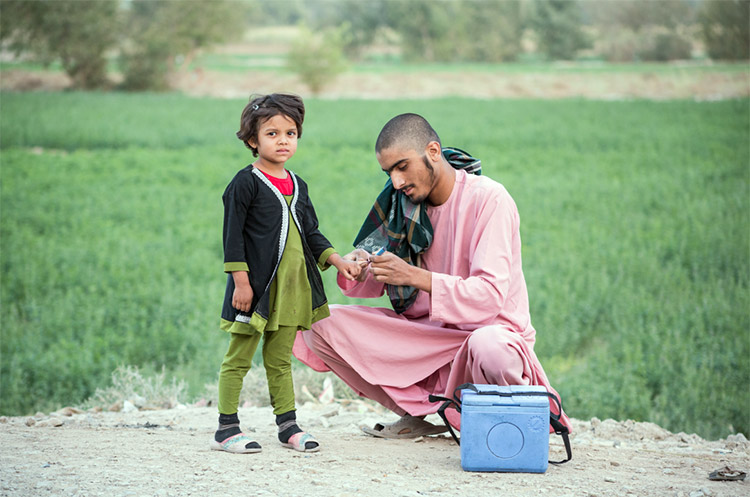Dr Ahmad Al-Mandhari, WHO Regional Director for the Eastern Mediterranean

Since 1988, when the global goal was first agreed by the member countries of the World Health Organization, vast amounts of effort and money have been spent on the global mission to eradicate polio, to wipe the disease clean off this earth. So why is it so important for us to keep investing time and effort after so long?
 I am part of a team of people dedicated to eradicating polio in WHO’s Eastern Mediterranean Region. Working with national governments and our partners in the Global Polio Eradication Initiative, we have gradually cleared polio from our communities until only a few pockets remain in Afghanistan and Pakistan. So far this year, wild poliovirus has paralyzed 22 children. While this number represents incredible progress compared to even a few years ago, it is 22 too many. Our goal is zero and anything else is unacceptable.
I am part of a team of people dedicated to eradicating polio in WHO’s Eastern Mediterranean Region. Working with national governments and our partners in the Global Polio Eradication Initiative, we have gradually cleared polio from our communities until only a few pockets remain in Afghanistan and Pakistan. So far this year, wild poliovirus has paralyzed 22 children. While this number represents incredible progress compared to even a few years ago, it is 22 too many. Our goal is zero and anything else is unacceptable.
Getting to zero transmissions is exhausting, expensive, and often frustrating. It’s frustrating not just for those on the frontline, but also for national governments and for the global partners that have played a crucial role in this long struggle.
But if we abandon the fight now, one thing is certain: polio will come back. It will regain ground in our villages and towns and communities, everywhere that we have collectively made free of polio through hard struggle. It will spread across borders and through children’s bodies, twisting muscles and shriveling limbs. The number of paralyzed children will rise again, to hundreds and thousands crippled each year by a disease we could have stopped.
The eradication of smallpox is widely seen as humankind’s greatest public health achievement. The eradication of polio can and should share this honour. But the most difficult stretch is upon us, and the last mile is harder than anyone could have imagined in 1988.
We can only stop the transmission of polio once there is no unprotected child left to pass it to. That means immunizing every last child. Every. Last. Child.
It means reaching children in the most far-flung places and from the most vulnerable communities, and engaging and convincing parents to allow their children to be vaccinated, again and again. Health workers are doing an incredible job building trust with communities, but that takes time, effort and money. And while science has taken us a long way, eradication is an all-or-nothing goal and getting over the line depends on painstaking, hard-won access in some of the most challenging environments in the world.
Globally, we have a vast team of remarkable people working on these challenges. Our team includes health professionals, community health workers, government leaders, generous donors, religious leaders, strategists, communicators and negotiators.
They are all engaged in this difficult, costly work. But it is work we must do to finally eradicate polio, and it is work we cannot afford to leave undone. Future generations depend on us to finish the job.
Note to editors:
The Global Polio Eradication Initiative receives financial support from governments of countries affected by polio, private sector foundations, donor governments, multilateral organizations, private individuals, humanitarian and nongovernmental organizations and corporate partners. Full list of all contributors.


